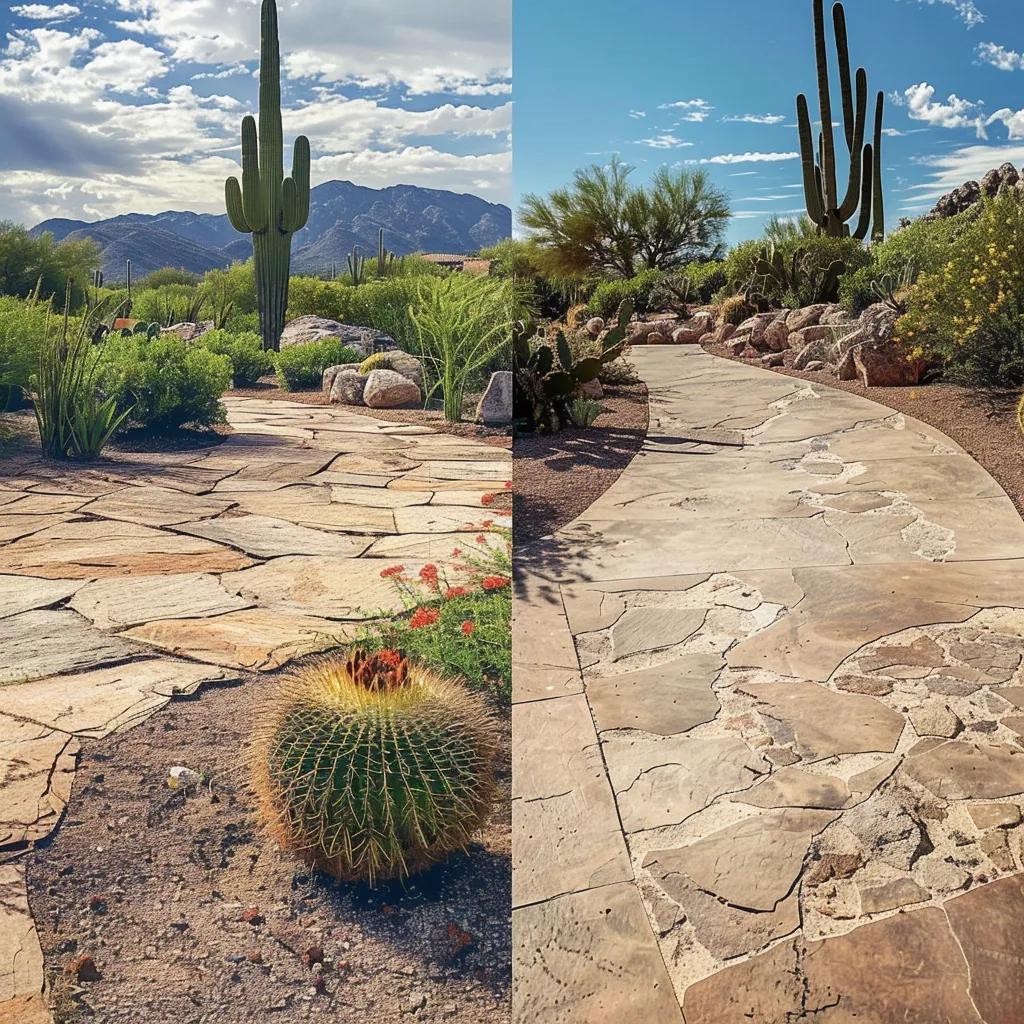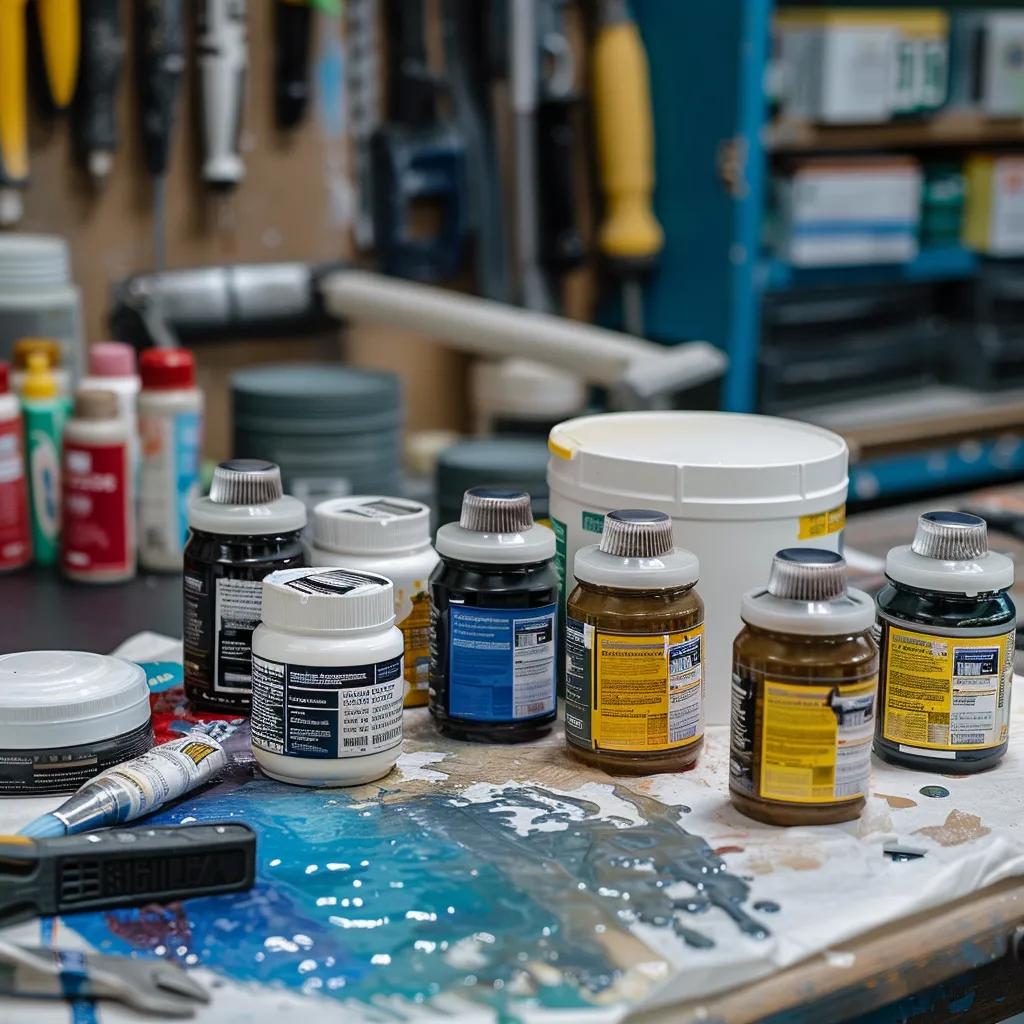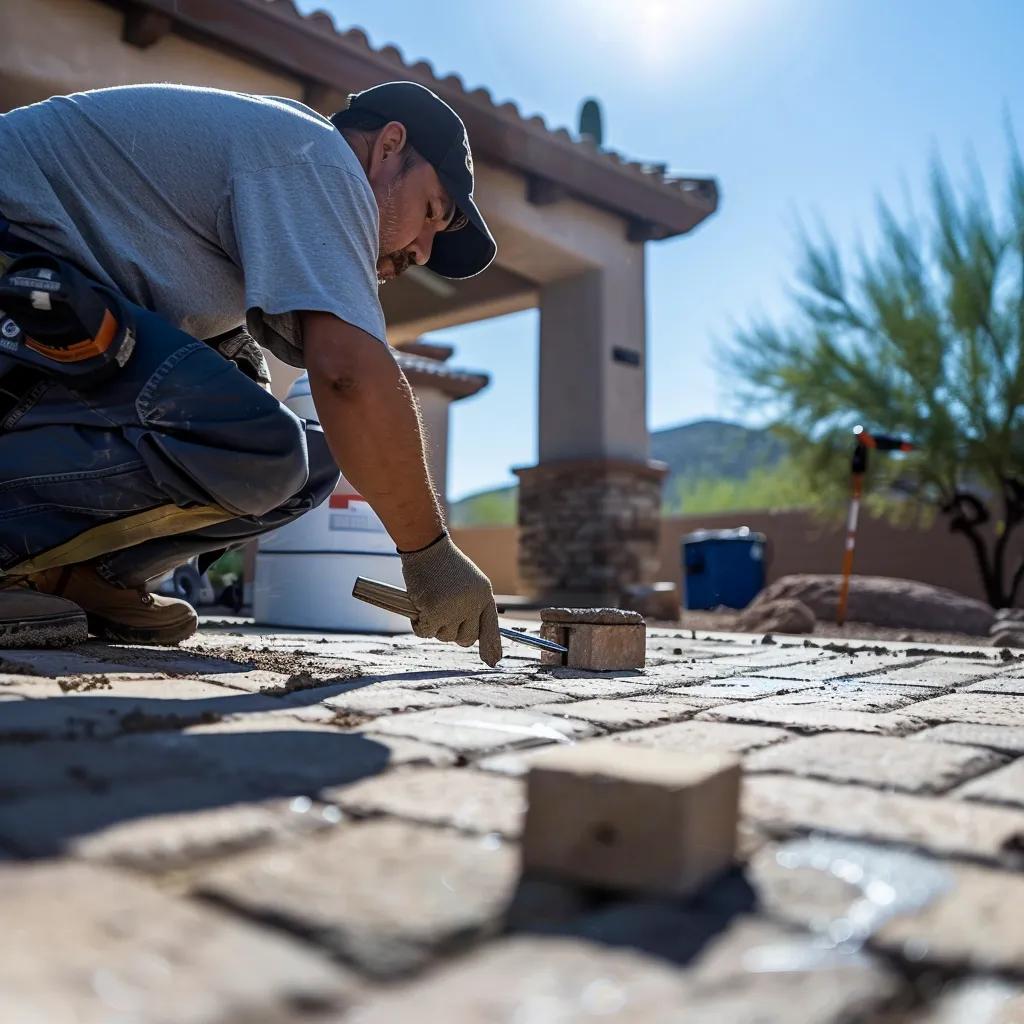Phoenix Hardscape Sealing & Waterproofing — Local Contractors at High End Outdoor Services
Sealing and waterproofing your hardscapes—patios, driveways, pavers, and natural stone—adds a protective layer or membrane that keeps moisture out, resists stains, and slows UV damage. Below we explain why these treatments matter in Phoenix and Scottsdale, how pros evaluate surfaces and apply the right systems, which chemistries work best for pavers versus concrete or travertine, and how different owners can build simple maintenance plans to protect their investment. Heat, relentless sun, and monsoon rains speed fading, efflorescence, and joint erosion more than most people expect; targeted sealing reduces those risks and delays costly repairs. Read on for a practical, step-by-step overview, a clear comparison of sealant types, program recommendations by audience, and short answers to scheduling and retrofit questions — all focused on helping you choose the right service and understand realistic outcomes. Local contractors who know Greater Phoenix deliver the most durable results.
Why are hardscape sealing and waterproofing essential for Phoenix outdoor surfaces?
Sealing and waterproofing create a barrier on outdoor surfaces that limits water intrusion, stabilizes joint materials, and shields finishes from UV and staining. They work by reducing capillary absorption, cutting surface abrasion, and preserving the binders that hold colors and textures in place. For Phoenix properties, that protection usually means fewer repairs, easier cleaning, and lower life-cycle costs than leaving surfaces unprotected. Knowing how these systems perform makes clear why a regular sealing program is a cost-effective part of landscape upkeep and asset preservation.
How does Arizona’s climate affect hardscape durability?

Arizona’s intense UV and high daytime temperatures speed color loss and break down surface binders in pavers and concrete. Big temperature swings between day and night increase thermal movement and microcracking, while monsoon bursts force salts and efflorescence to the surface. Wind-driven dust abrades finishes and lodges in joints. Those stresses produce a familiar pattern: faded surfaces, weakened joint sand, and more visible stains on pavers. Addressing these local drivers means choosing sealants with solid UV resistance and setting maintenance intervals based on exposure and traffic.
What are the key benefits of sealing and waterproofing hardscapes?
Sealing and waterproofing provide both visible and structural advantages that help owners protect value and cut maintenance time. Below are the primary benefits and a brief practical takeaway.
- Color and appearance preservation: Sealers slow UV fade and bring out natural tones so surfaces look newer longer.
- Stain and moisture protection: Film-forming and penetrating treatments reduce oil, grease, and water penetration that cause stains.
- Joint stabilization and weed control: Correct joint stabilization with compatible materials prevents sand loss and limits weed growth.
Combined, these benefits reduce replacement needs and make routine cleaning easier — a smart investment for hardscapes exposed to Arizona heat.
What is the professional process for hardscape sealing and waterproofing at HEOS?
Our professional workflow follows assessment → preparation → repair → application → cure/inspect to ensure adhesion and lasting performance. First, crews evaluate the substrate, drainage, and existing damage to select compatible products and scope repairs. Next, thorough cleaning and joint stabilization remove contaminants that cause early failure. The final steps apply the chosen sealer or membrane under controlled conditions and verify cure times before returning the area to use.
How do we prepare and clean hardscape surfaces before sealing?
Preparation starts with pressure washing, targeted efflorescence treatment, and joint cleaning to remove embedded debris, biological growth, and salts that block adhesion. We allow adequate drying—typically 24–48 hours depending on temperature and humidity—because sealing over damp material can trap moisture and lead to blisters or whitening. Repairs like crack filling or re-leveling uneven pavers are completed before sealing to create a uniform surface and eliminate water paths. Proper prep reduces rework and extends sealer life, making the initial investment pay off.
Effectiveness of Surface Coatings in Enhancing Concrete Durability
Laboratory testing compared coated and uncoated concrete for chloride penetration and carbonation resistance. Results showed epoxy and polyurethane coatings outperformed acrylics, and coated specimens were significantly more durable than uncoated controls.
Effectiveness of surface coatings in improving concrete durability, FM Khan, 2003
Which sealants and waterproofing materials does HEOS use?

We select sealants by substrate, exposure, and desired finish. The common categories are film-forming acrylics, durable urethanes, and penetrating silane/siloxane systems.
The table below summarizes typical options so you can match product choice to Phoenix conditions.
| Sealant Type | Best For / Compatibility | Finish / UV Resistance |
|---|---|---|
| Acrylic (film) | Pavers, colored concrete | Glossy to matte / Medium |
| Urethane (film) | High-traffic concrete, coated surfaces | Low-gloss / High |
| Silane/Siloxane (penetrating) | Natural stone, porous concrete | Natural look / High |
Choosing the right chemistry delivers the best balance of durability and appearance: penetrating systems for stone, strong film-formers for vehicular areas, and products with high UV resistance for Phoenix exposures.
Laboratory and Exterior Durability of High Performance Acrylic Sealants
This study compared acrylic sealants with silicone and urethane types using tensile strength, elongation, hardness, and adhesion measures. The report documents relative performance under lab and exterior conditions.
Laboratory and Exterior Durability of High Performance Acrylic Sealants, 1998
HEOS integration note: As a family-owned contractor serving Scottsdale and Greater Phoenix, High End Outdoor Services chooses materials based on local climate stressors and each client’s goals. We provide estimates and tailored service plans for installation and ongoing maintenance.
How do sealing and waterproofing services benefit different property types in Greater Phoenix?
Protective programs differ by owner goals: homeowners want curb appeal and easier cleaning, HOAs need predictability and compliance, and commercial clients prioritize safety and uptime. By tailoring frequency, product selection, and documentation, property managers can control costs and lower long-term capital needs. The short list below helps stakeholders pick the right scope and cadence.
- Homeowner programs: One-off sealing to boost appearance and simplify upkeep.
- HOA maintenance plans: Scheduled cycles across common areas with bulk pricing and compliance records.
- Commercial contracts: Focused protection for high-traffic zones that supports safety and minimal downtime.
Below is a compact matrix linking property types to primary concerns and suggested service cadence.
| Property Type | Primary Concern | Recommended Service / Typical Frequency |
|---|---|---|
| Homeowner | Aesthetics & stain control | Annual inspection; sealing every 2–3 years |
| HOA / Property Manager | Predictability & compliance | Multi-year plan with scheduled cycles |
| Commercial | Safety & uptime | Targeted sealing with quarterly inspections |
In short: matching service scope to property type delivers measurable lifecycle savings and clearer maintenance budgeting.
Durability Comparison of Silicone and Urethane Sealants
Outdoor testing evaluated one- and two-part urethanes, solvent-release acrylics, and latex acrylics to assess long-term durability. The results informed comparative performance under field conditions.
Comparisons of silicone and urethane sealant durabilities, 1991
HEOS integration note: High End Outdoor Services partners with homeowners, HOAs, property managers, and commercial clients to design maintenance plans that fit budgets and performance goals. Contact us for an estimate and schedule options.
What are the most common questions about hardscape sealing and waterproofing in Phoenix?
The short answers below address the questions we hear most often and point you to the next steps.
How often should pavers and concrete be sealed in Arizona?
Typical intervals are every 2–3 years for exposed pavers and 2–4 years for concrete patios, depending on finish, UV exposure, traffic, and cleaning. High-sun locations and vehicle traffic shorten those intervals; shaded or low-traffic areas can go longer. Inspect after monsoon season to spot wear and refine your schedule. A professional assessment will confirm product-specific timing to maximize life span.
Can existing hardscapes be waterproofed or sealed professionally?
Yes — most existing hardscapes can be sealed or waterproofed if they are structurally sound and drainage issues are addressed first. A professional evaluation identifies settlement, drainage faults, or severe damage that must be repaired before sealing; in extreme cases replacement is advised. Typical retrofit steps include cleaning, crack repairs, re-sanding joints, and selecting a sealer that bonds or penetrates the existing substrate. For project-specific guidance, schedule an on-site evaluation with a local hardscape specialist.

